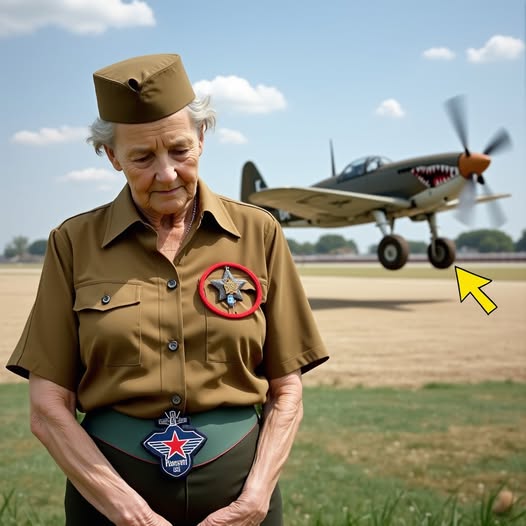For Chief Master Sergeant Margaret Sullivan, retired, the air show was a pilgrimage. It had been a long journey from her small apartment to the roaring tarmac of Davis Air Force Base, a journey made for the love of a single plane: the rugged A-10 Warthog. But as she tried to move closer to the action, a man named Bradley Chen, clad in an official staff vest, stopped her. He saw only an elderly woman in a simple dress, someone who surely couldn’t understand the technical demonstrations. With a patronizing smile, he redirected her to the general public area, a place where she would be just another face in a sea of spectators, far from the aircraft that held her life’s work.
Unbeknownst to Bradley, the faded satchel Margaret carried was a treasure trove of aviation history. It contained the original maintenance protocols that had kept A-10s flying in combat for decades. These were her creations, solutions born from late nights and a fierce determination to bring pilots home safely. As she stood at the back of the crowd, a conversation sparked with a young mechanic and a veteran. They spoke her name—”Margaret Sullivan”—with a respect usually reserved for heroes. They talked of her manuals, her innovations, and the lives she had saved, all while she stood silently among them, the anonymous architect of the very systems they admired.
The situation turned when Bradley’s voice, making a dismissive comment about women in maintenance, was broadcast over the loudspeakers. The insult was heard by everyone, including Lieutenant Colonel Sarah Morrison, Margaret’s granddaughter, who was flying an A-10 in the demonstration above. In a breathtaking act of defiance, Sarah broke from her routine. She swooped low over the crowd and used her aircraft’s radio to address the thousands below, publicly honoring her grandmother and calling out the injustice. The missing man formation she flew was a poignant salute that left no doubt about Margaret’s immense value to the Air Force.
The base commander himself soon arrived, apologizing and escorting Margaret to the VIP section. The very maintenance crews she had been barred from now looked at her with tear-filled eyes and unwavering respect. They asked her to lead their demonstration, and she did, effortlessly explaining the repair techniques she had designed a lifetime ago. The snub had been profound, but the redemption was absolute. It was a powerful lesson to everyone present that contribution and expertise can never be measured by appearance, and that a legacy built on excellence will always, eventually, be recognized.
Margaret’s story did not end on the airfield. Her experience sparked a national conversation, leading to a new role advising the Air Force and testifying before Congress. The woman who was once told she didn’t belong became a beacon for a new generation, proving that the doors she had forced open would remain open for others. The A-10, a plane she helped perfect, continued its flight, a lasting testament to the idea that the most enduring innovations often come from those who are underestimated, but never deterred.


